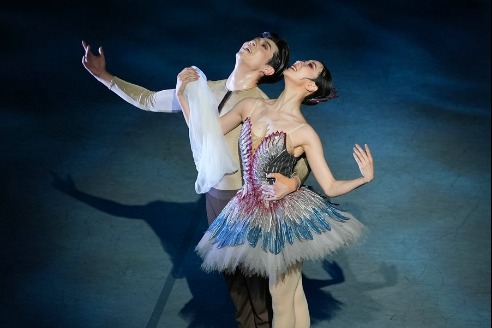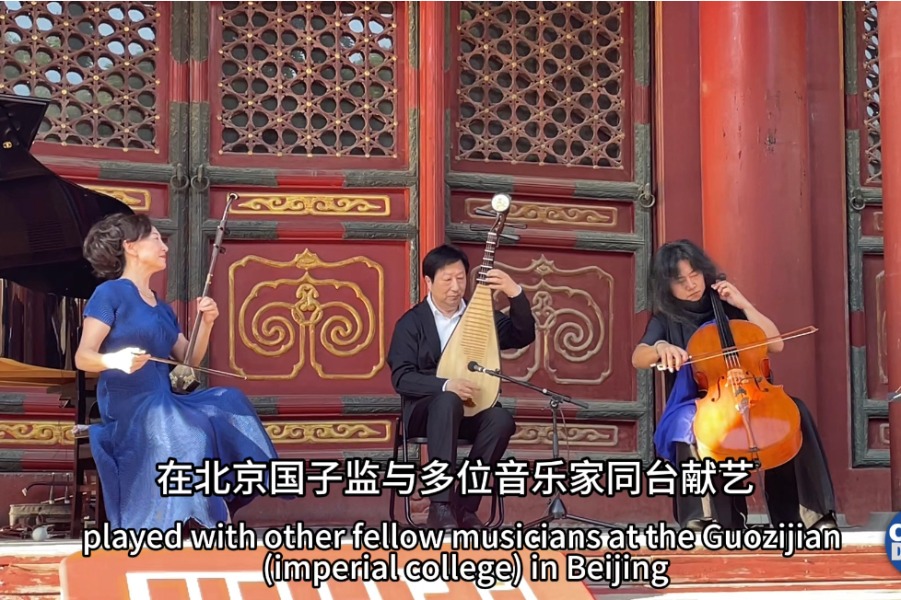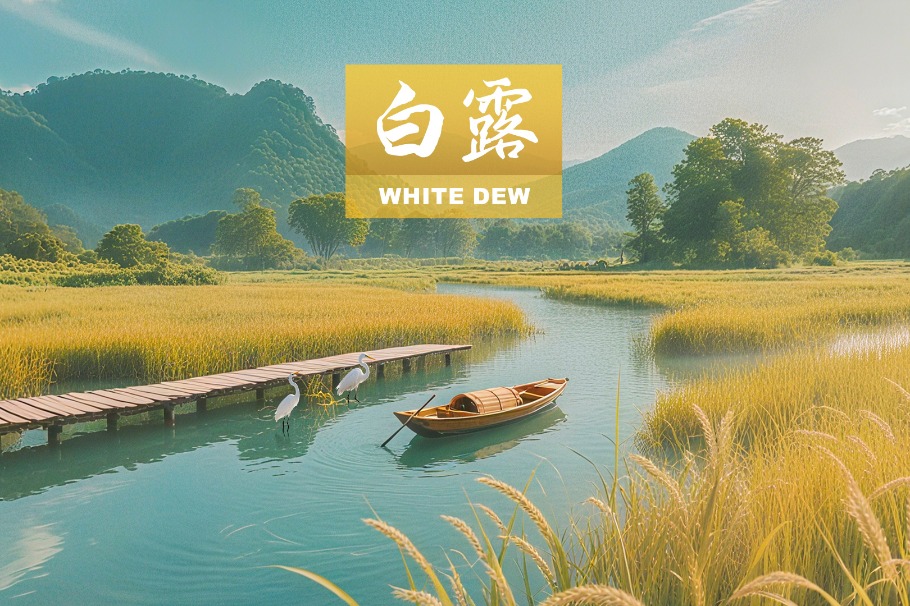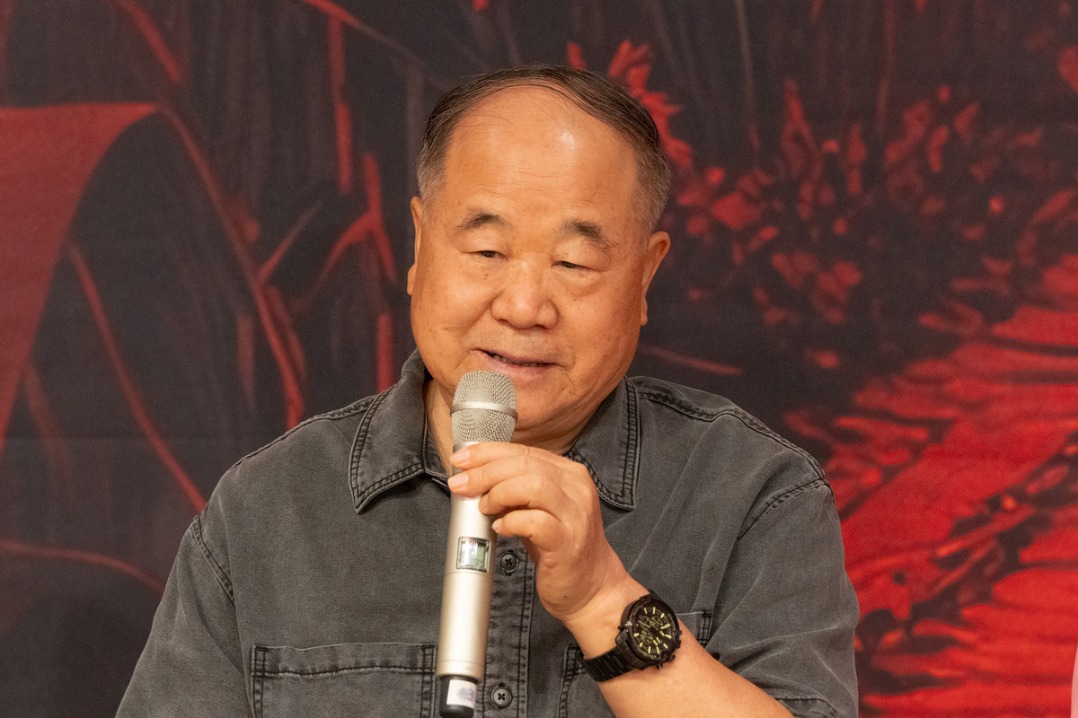Diplomats explore the wonders of Ningxia


Diplomats from 14 countries, including Dominica, Jordan, and the Bahamas, recently concluded an immersive four-day tour of the Ningxia Hui autonomous region as part of the Ministry of Culture and Tourism's 2025 "Discover China Cultural Tour". The visit, which began in Yinchuan, the region's capital city, on Aug 26, provided an in-depth exploration of Ningxia's rich cultural heritage and striking natural landscapes.
The delegation visited several key landmarks, starting with the Ningxia Museum, which houses an extensive collection of artifacts, some of which are more than 1,000 years old. There, they gained deeper insights into Ningxia's significant role as a pivotal hub along the ancient Silk Road.
The envoys also stopped at the Ningxia Art Museum, where they participated in a hands-on calligraphy session, writing Chinese characters with brush and ink — a firsthand experience to appreciate the elegance of this traditional art form.
A major highlight of the itinerary was the Xixia Imperial Tombs, an expansive burial complex dating back to the 11th century that was recently inscribed on the UNESCO World Heritage List. Nestled in the Gobi Desert, the site includes nine imperial mausoleums and 271 subordinate tombs. The delegates were deeply impressed by both the grandeur of the architecture and the site's historical significance as a crucial distribution center along the ancient Silk Road.
"The inclusion of this site on the UNESCO list demonstrates the contributions Chinese civilization has made, and continues to make, to world heritage and our shared human history," says Hussam Al Husseini, Jordan's ambassador to China.
At the Helan Mountain Rock Art Scenic Area, the delegation viewed representative examples of ancient petroglyphs. These rock carvings, often referred to as "the art gallery of prehistoric humans" and "an epic on stones", depict scenes of hunting, farming, herding, rituals, and totems, offering a glimpse into the millennia-old multiethnic life in the Helan Mountain region.
"The rock paintings are like the communication of ancient times. It's really impressive," says Khamis Mussa Omar, the ambassador of Tanzania to China.
In Zhongwei's Shapotou scenic area, situated on the fringe of the Tengger Desert, the diplomats learned about China's pioneering efforts in desertification control, including the innovative "straw checkerboard" technique used to stabilize sand dunes. They also enjoyed desert adventures, such as dune bashing and cable car rides.
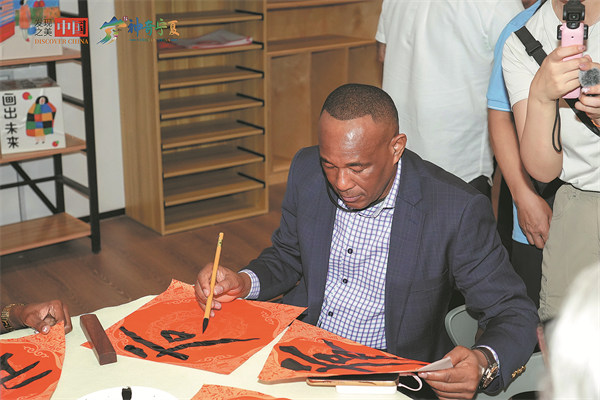
Upon arriving in Wuzhong city, the final stop on the tour, the diplomats participated in a workshop on the art of making "eight-treasure tea" under the guidance of local intangible cultural heritage inheritors. They also visited the Yellow River Grand Canyon, where they admired its unique cultural landscape, which seamlessly integrates ancient hydraulic engineering with majestic natural scenery.
Since its launch in 2021, the "Discover China Cultural Tour" has welcomed more than 480 diplomats from 107 countries to 20 provinces and regions across China, providing them with firsthand encounters with the nation's cultural depth, natural beauty, and modern development.
The Ningxia segment, which concluded on Aug 29, effectively highlighted the successful integration of cultural preservation, ecological conservation, and tourism development in China's western regions.



















